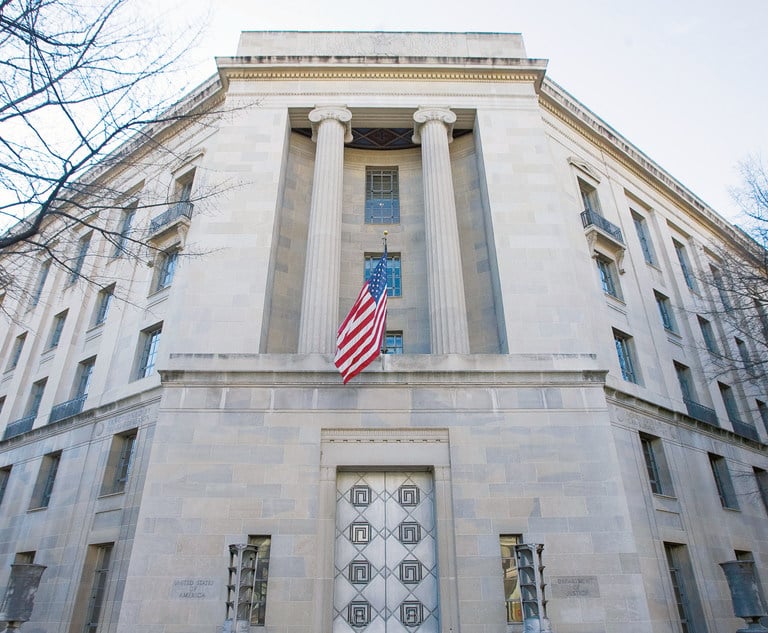KitKat Can't Catch a Break with Trademark Dispute
Gaming company Atari recently filed a complaint in San Francisco federal court against Nestlé for exploiting the name of its iconic video game “Breakout”…
September 18, 2017 at 10:10 PM
6 minute read
The original version of this story was published on Law.com
Gaming company Atari recently filed a complaint in San Francisco federal court against Nestlé for exploiting the name of its iconic video game “Breakout” in the company's advertisements for the popular KitKat candy bar.
Accused of mimicking the classic Breakout video game screen and replacing bricks with KitKat bars, the global food and drink company now faces accusation of copyright and trademark infringement. Atari also alleges that Nestlé has impaired Atari's ability to license its IP rights for “Breakout” and other games in various markets, including the candy market.
Josh Reisberg, Counsel from Axinn, Veltrop & Harkrider, sat down with Inside Counsel to weigh in on this recent lawsuit filed against Nestlé and any subsequent developments in the case. He regularly advises clients on the protection, enforcement and monetization of intellectual property and shared insight into what challenges might lie ahead as Atari seeks compensation and punitive damages for the alleged infringement.
According to Atari's complaint, Atari monetizes its video game IP through licensing, and has a correspondingly strong interest in preserving all current and future licensing streams that could be negatively impacted through third-party exploitation and potential brand dilution. Atari's interest in protecting any IP directed to its video games such as “Breakout” is likely heightened this summer given that Atari recently announced plans to sell a new video game console–the Ataribox–its first new console in 24 years.
“It's difficult to see how this lawsuit could have been avoided other than through Nestlé's avoiding any reference in its advertising to any Atari video game,” explained Reisberg. “The legal claims that Atari states are fact-specific and require application of various legal tests to determine whether IP has been infringed or whether Atari's trademark has been diluted. Because these tests are fact-specific and can be applied with different results, a potential plaintiff often is not precluded by rules such as Rule 11 of the Federal Rules of Civil Procedure from filing the lawsuit in the first instance.”
The significance of this case, in Reisberg's opinion, is with respect to Atari's claims under the Lanham Act, and with the viability of the nominative fair use doctrine as a defense to trademark infringement. Referencing another's trademark is common in all forms of media, from TV to movies to comparative advertising. The Ninth Circuit developed the doctrine of nominative fair use as a defense to trademark infringement where an alleged infringer uses another's trademark to refer to the trademark holder's product rather than the alleged infringer's product.
The defense consists of a three-pronged test, sometimes referred to as the NKOTB test because the doctrine was developed by the 9th Circuit in the seminal 1991 case, New Kids on the Block (NKOTB) v. News America Publishing Inc. Per Reisberg, the three prongs are: The product in question must be one not readily identifiable without the use of the trademark; only so much of the mark or marks may be used as is reasonably necessary to identify the product and; the user must do nothing that would, in conjunction with the mark, suggest sponsorship or endorsement by the trademark holder.
“The defense is interesting for two reasons,” he explained. “First, in the 9th Circuit, the plaintiff has the burden to disprove the defense. Logistically, if Nestlé invokes this defense, Atari will need to prove that it is not applicable. Second, the concept of nominative fair use has not been readily adopted by other Circuits since its inception in the 1991 NKOTB case. Indeed, the 2nd, 3rd, and 5th Circuits each apply a framework for addressing nominative fair use in the concept of trademark infringement different from the framework applied by the 9th Circuit. “
Consistent with the statutorily defined fair use defense, the doctrine of nominative fair use strikes a balance between a desire not to chill expressive, artistic, and even commercial speech, and the need to protect consumers from confusion as to the origin of goods and services. According to Reisberg, this case may present another opportunity for the courts to address the viability of the defense, which has not always been applied clearly, even in the 9th Circuit.
Atari faces challenges in proving the merits of its claims. For example, in the context of Atari's Lanham Act claims, the principle underlying those claims is whether confusion existed among ordinary consumers as to the source, sponsorship, affiliation, or approval of Nestlé's Kit-Kat bars. Did ordinary consumers believe that Atari sponsored or approved Kit-Kat bars? Did ordinary consumers believe that Atari was the source of Nestlé's Kit-Kat bars? Did Nestlé attempt to appropriate the cachet of Atari's Breakout video game for its Kit-Kat bars?
“Atari's complaint provides no details concerning the scope of the alleged consumer confusion, which would need to be developed through costly discovery,” he said.
If Nestlé raises a nominative fair use defense, it faces its own challenges, for example, in showing that the third prong of the NKOTB test has been satisfied. Did Nestle do anything through its advertisements to suggest sponsorship or endorsement by Atari? Did Nestle's replacement of the bricks in the “Breakout” video game screen with Kit-Kat bars suggest such sponsorship or endorsement?
Reisberg said, “If Nestlé prevails, then there can be no trademark infringement liability. If Nestlé does not prevail, Atari must still prove liability by showing a likelihood of confusion among ordinary consumers.”
So, what are trademark best practices that companies should follow to protect themselves from lawsuits like this?
“This case is an example of the limitations of the fair use defense to forestall litigation,” he said. “Nestlé might very well have a legitimate fair use defense to Atari's Lanham Act claims given that Nestlé is using the term in question either descriptively–by asking consumers to break out–or to refer to Atari's “Breakout” video game rather than Nestlé's own Kit-Kat products. But having a strong fair use defense typically is insufficient to prevent a potential plaintiff from filing a lawsuit and to prevent the parties from having to engage in costly litigation.”
According to Reisberg, the best practice for any company seeking to refer to another's trademark in any form of commercialized speech is to obtain permission from the trademark holder, and agree on language to use along with the speech to ensure no likelihood of confusion among ordinary consumers as to the source, sponsorship, endorsement, affiliation, or approval of the company's goods or services by the trademark holder.
This content has been archived. It is available through our partners, LexisNexis® and Bloomberg Law.
To view this content, please continue to their sites.
Not a Lexis Subscriber?
Subscribe Now
Not a Bloomberg Law Subscriber?
Subscribe Now
NOT FOR REPRINT
© 2025 ALM Global, LLC, All Rights Reserved. Request academic re-use from www.copyright.com. All other uses, submit a request to [email protected]. For more information visit Asset & Logo Licensing.
You Might Like
View All
Advance Auto Parts Hires GC Who Climbed From Bottom to Top of Lowe's Legal Department
2 minute read

Compliance With EU AI Act Lags Behind as First Provisions Take Effect

Internal GC Hires Rebounded in '24, but Companies Still Drawn to Outside Candidates
4 minute readTrending Stories
- 1States Accuse Trump of Thwarting Court's Funding Restoration Order
- 2Microsoft Becomes Latest Tech Company to Face Claims of Stealing Marketing Commissions From Influencers
- 3Coral Gables Attorney Busted for Stalking Lawyer
- 4Trump's DOJ Delays Releasing Jan. 6 FBI Agents List Under Consent Order
- 5Securities Report Says That 2024 Settlements Passed a Total of $5.2B
Who Got The Work
J. Brugh Lower of Gibbons has entered an appearance for industrial equipment supplier Devco Corporation in a pending trademark infringement lawsuit. The suit, accusing the defendant of selling knock-off Graco products, was filed Dec. 18 in New Jersey District Court by Rivkin Radler on behalf of Graco Inc. and Graco Minnesota. The case, assigned to U.S. District Judge Zahid N. Quraishi, is 3:24-cv-11294, Graco Inc. et al v. Devco Corporation.
Who Got The Work
Rebecca Maller-Stein and Kent A. Yalowitz of Arnold & Porter Kaye Scholer have entered their appearances for Hanaco Venture Capital and its executives, Lior Prosor and David Frankel, in a pending securities lawsuit. The action, filed on Dec. 24 in New York Southern District Court by Zell, Aron & Co. on behalf of Goldeneye Advisors, accuses the defendants of negligently and fraudulently managing the plaintiff's $1 million investment. The case, assigned to U.S. District Judge Vernon S. Broderick, is 1:24-cv-09918, Goldeneye Advisors, LLC v. Hanaco Venture Capital, Ltd. et al.
Who Got The Work
Attorneys from A&O Shearman has stepped in as defense counsel for Toronto-Dominion Bank and other defendants in a pending securities class action. The suit, filed Dec. 11 in New York Southern District Court by Bleichmar Fonti & Auld, accuses the defendants of concealing the bank's 'pervasive' deficiencies in regards to its compliance with the Bank Secrecy Act and the quality of its anti-money laundering controls. The case, assigned to U.S. District Judge Arun Subramanian, is 1:24-cv-09445, Gonzalez v. The Toronto-Dominion Bank et al.
Who Got The Work
Crown Castle International, a Pennsylvania company providing shared communications infrastructure, has turned to Luke D. Wolf of Gordon Rees Scully Mansukhani to fend off a pending breach-of-contract lawsuit. The court action, filed Nov. 25 in Michigan Eastern District Court by Hooper Hathaway PC on behalf of The Town Residences LLC, accuses Crown Castle of failing to transfer approximately $30,000 in utility payments from T-Mobile in breach of a roof-top lease and assignment agreement. The case, assigned to U.S. District Judge Susan K. Declercq, is 2:24-cv-13131, The Town Residences LLC v. T-Mobile US, Inc. et al.
Who Got The Work
Wilfred P. Coronato and Daniel M. Schwartz of McCarter & English have stepped in as defense counsel to Electrolux Home Products Inc. in a pending product liability lawsuit. The court action, filed Nov. 26 in New York Eastern District Court by Poulos Lopiccolo PC and Nagel Rice LLP on behalf of David Stern, alleges that the defendant's refrigerators’ drawers and shelving repeatedly break and fall apart within months after purchase. The case, assigned to U.S. District Judge Joan M. Azrack, is 2:24-cv-08204, Stern v. Electrolux Home Products, Inc.
Featured Firms
Law Offices of Gary Martin Hays & Associates, P.C.
(470) 294-1674
Law Offices of Mark E. Salomone
(857) 444-6468
Smith & Hassler
(713) 739-1250






